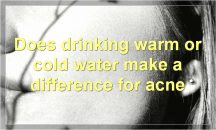If you’re looking to get rid of those pesky sebaceous filaments, then look no further! In this article, we’ll tell you everything you need to know about these tiny skin invaders.
What are sebaceous filaments
Sebaceous filaments are tiny, hair-like structures that protrude from the pores on your skin. They’re made up of sebum, the same substance that lubricates and waterproofs your skin and hair.
While they may look unsightly, sebaceous filaments are actually quite normal. Everyone has them, and they’re nothing to be concerned about.
That said, some people may want to get rid of their sebaceous filaments for cosmetic reasons. If that’s the case, there are a few things you can try.
Here’s a look at what sebaceous filaments are, why you have them, and how you can get rid of them if you choose to.
What are sebaceous filaments?
Sebaceous filaments are small, cylindrical structures that are found in pores. They’re made up of sebum, which is an oily substance that helps keep your skin and hair moisturized.
Sebaceous filaments vary in size, but they’re typically around 0.1 millimeters in diameter. They’re usually darker in color than the surrounding skin, which can make them more visible.
While they may resemble blackheads, sebaceous filaments are not the same thing. Blackheads are clumps of dead skin cells and oil that have become trapped in pores. Sebaceous filaments, on the other hand, are normal structures that everyone has.
Why do I have sebaceous filaments?
Sebaceous filaments form when sebum collects in pores. This can happen for a variety of reasons, including:
• Hormonal changes. Sebum production tends to increase during puberty and pregnancy. This can cause sebaceous filaments to become more prominent.
• Genetics. Some people are simply more prone to developing sebaceous filaments than others.
• Oily skin. People with oily skin tend to have larger pores and produce more sebum. As a result, they’re more likely to develop sebaceous filaments.
Can sebaceous filaments be removed?
Sebaceous filaments are harmless and don’t need to be removed. However, some people may want to get rid of them for cosmetic reasons.
There are a few ways to remove sebaceous filaments, but it’s important to note that they will eventually come back. That’s because they’re formed by normal processes that occur within the pores.
Here are a few methods that may help remove sebaceous filaments:
• Cleansing with salicylic acid or glycolic acid. These ingredients can help break down the buildup of oil and dead skin cells that can contribute to the formation of sebaceous filaments. Look for products that contain these ingredients and use them as directed.
• Exfoliating with a physical exfoliant or chemical exfoliant. Physical exfoliants (such as scrubs) and chemical exfoliants (such as alpha hydroxy acids) can help slough away dead skin cells and reduce the build-up of oil in pores. Use an exfoliating product a few times per week as needed. Just be sure not to overdo it, as this could irritate your skin.
• Using pore strips or clay masks. Pore strips and clay masks can help remove sebum and debris from pores. Use them as directed until you see results. Keep in mind that these methods may only provide temporary relief from sebaceous filaments.
What causes sebaceous filaments

Sebaceous filaments are small, cylindrical collections of sebum and dead skin cells that can appear on the face. They’re most commonly found on the nose and cheeks, but can also pop up on the chin, forehead, and even back. While they may resemble blackheads, sebaceous filaments are actually much different. Blackheads are clogged pores that are filled with oxidized sebum, whereas sebaceous filaments are simply deposits of sebum and skin cells.
So, what exactly causes sebaceous filaments? Well, there are a few factors that can contribute. First and foremost, sebaceous filaments are most common in people with oily skin. This is because people with oily skin tend to produce more sebum than those with dry or normal skin. And as we all know, excess sebum can lead to clogged pores and blackheads.
Another factor that can contribute to the formation of sebaceous filaments is dead skin cells. Just like sebum, dead skin cells can build up and clog pores. This is why it’s so important to exfoliate regularly and remove dead skin cells from the surface of the skin.
Last but not least, genetics may also play a role in the formation of sebaceous filaments. If you have a family member who suffers from them, you may be more likely to get them as well.
While sebaceous filaments may be a nuisance, they’re actually harmless and pose no threat to your health. However, some people may feel self-conscious about them and want to get rid of them for cosmetic reasons. If this is the case, there are a few things you can do.
Firstly, you can try to control excess oil production by using oil-free products and avoiding triggers that cause your skin to produce more oil (such as certain foods). You can also try exfoliating regularly to help keep pores clear and prevent dead skin cells from building up. Finally, if you’re really struggling with sebaceous filaments, you could always consult a dermatologist for advice.
How can you prevent sebaceous filaments
If you’re one of the many people who suffer from sebaceous filaments, you know how frustrating they can be. These tiny little black or white bumps can clog pores and make your skin look dull and uneven. Though they’re not technically acne, they can still be a pain to deal with.
Luckily, there are a few things you can do to prevent sebaceous filaments from taking over your face. First, make sure you’re cleansing your face properly every day. A good cleanser will help remove dirt and oil from your skin, keeping your pores clear.
You should also exfoliate regularly to help keep your pores clear and reduce the risk of sebaceous filaments. Look for an exfoliator that contains salicylic acid or glycolic acid, as these ingredients can help break down the buildup that can lead to sebaceous filaments.
Finally, make sure you’re using a good moisturizer to keep your skin hydrated. Dry skin is more likely to produce excess oil, which can lead to sebaceous filaments. So, by keeping your skin hydrated, you can help prevent these pesky bumps from forming.
What are some home remedies for sebaceous filaments
Sebaceous filaments are small, cylindrical collections of sebum and dead skin cells that can commonly be found on the nose and face. Although they are not harmful, many people choose to remove them for cosmetic reasons. There are a number of home remedies that can be used to safely and effectively eliminate sebaceous filaments.
One popular home remedy is to mix equal parts baking soda and water to form a paste. This paste can then be applied to the areas of the face where sebaceous filaments are present and allowed to sit for 5-10 minutes. Afterward, the paste can be rinsed away with warm water and a washcloth.
Another effective home remedy is to make a mixture of 1 part lemon juice and 2 parts water. This solution can be applied to the face with a cotton ball and left on for 10-15 minutes before being rinsed away.
Those looking for a more natural option may want to try using a mixture of honey and cinnamon. This mixture can be applied to the face and left on for 20-30 minutes before being rinsed away with warm water.
Finally, one last home remedy that can be used is a mixture of 1 part apple cider vinegar and 2 parts water. This solution should be applied to the face with a cotton ball and left on for 10-15 minutes before being rinsed away.
Depending on the severity of sebaceous filaments, multiple treatments may be necessary in order to completely eliminate them. However, these home remedies are safe to use and typically very effective at getting rid of sebaceous filaments.
Can sebaceous filaments be removed permanently
Sebaceous filaments are small, hair-like structures that protrude from the pores on your skin. They’re made up of sebum, the same oily substance that lubricates your skin and hair.
While sebaceous filaments aren’t harmful, some people find them unsightly and want to get rid of them. The good news is that there are a few things you can do to reduce their appearance.
Wash your face twice a day with a mild cleanser. Exfoliate your skin once or twice a week with a gentle scrub. Use a pore-minimizing toner daily. Apply a light, oil-free moisturizer to keep your skin hydrated.
If you’re still seeing sebaceous filaments after trying these home remedies, you may want to talk to a dermatologist about other treatment options, such as laser therapy or chemical peels.
How do dermatologists treat sebaceous filaments

Sebaceous filaments are small, cylindrical yellowish or white deposits that are found on the surface of the skin. They are most commonly found on the face, particularly on the nose and chin. Sebaceous filaments are made up of sebum, which is an oily substance produced by the sebaceous glands. These glands are located in the hair follicles and help to lubricate and protect the skin.
Sebaceous filaments are completely normal and are not a cause for concern. However, some people may want to remove them for cosmetic reasons. There are a number of ways to do this, but it is important to speak to a dermatologist first as they will be able to advise on the best course of action.
The most common way to remove sebaceous filaments is through extraction. This involves using a small tool to gently press on the filament and lift it out of the pore. Extraction can be done at home, but it is always best to seek professional help as doing it yourself can lead to infection or scarring.
Another option is to use a chemical peel. This involves applying a solution to the skin which dissolves the sebum that makes up the filament. Chemical peels can be bought over the counter, but it is again advisable to speak to a dermatologist before using one as they can cause irritation.
If you are looking to get rid of sebaceous filaments, then it is important to speak to a dermatologist. They will be able to advise you on the best course of action depending on your individual case.
What over-the-counter treatments are available for sebaceous filaments
Sebaceous filaments are small, cylindrical structures that protrude from the pores on your skin. They’re made up of sebum, the same substance that lubricates your skin and hair.
While sebaceous filaments are usually nothing to worry about, some people may want to get rid of them for cosmetic reasons. There are a few over-the-counter treatments available that can help with this.
To start, you can try using a pore strip. Pore strips are adhesive strips that you apply to your skin. They’re designed to remove sebaceous filaments (and other impurities) from your pores as you peel them off.
You can also try using a comedone extractor. This is a small, hand-held tool that helps to remove sebaceous filaments from your pores. It works by applying gentle pressure to the area around the sebaceous filament. This pushes the filament out of the pore so that it can be wiped away.
Finally, you can use a topical retinoid cream. Retinoids are a type of vitamin A derivative that can help to unclog pores and reduce sebum production. This can help to reduce the appearance of sebaceous filaments over time.
If you’re concerned about the appearance of sebaceous filaments on your skin, talk to your doctor or dermatologist. They can help you choose the best treatment option for your needs.
Are there any risks associated with treating sebaceous filaments
Sebaceous filaments are tiny clusters of sebaceous glands and hair that are found in the pores of human skin. Although they are usually not visible to the naked eye, they can be seen with a magnifying glass or microscope. Sebaceous filaments are a normal part of the skin and play an important role in keeping the skin lubricated and protected.
However, there are a few risks associated with treating sebaceous filaments. One of the most common risks is over-treating the area, which can lead to redness, inflammation, and even scarring. It is important to follow the instructions of your dermatologist or esthetician when treating sebaceous filaments, so as not to cause any damage to the skin.
Another risk associated with treating sebaceous filaments is that of infection. If the pores become irritated or inflamed, bacteria can enter and cause an infection. This is why it is important to cleanse the skin thoroughly before and after treatment, and to avoid picking or squeezing at the sebaceous filaments.
If you are considering treatment for sebaceous filaments, it is important to speak with a dermatologist or esthetician first to ensure that it is the right decision for you. They will be able to assess your individual skin type and determine the best course of treatment.
How can you tell if you have sebaceous filaments
Sebaceous filaments are tiny keratin-filled tubes that are found on the face, typically around the nose and chin. They are made up of sebum, which is an oily substance that helps to keep our skin lubricated. Although they are completely harmless, some people may find them unsightly and wish to get rid of them.
There are a few ways to tell if you have sebaceous filaments. Firstly, they will appear as small, dark spots on your skin. Secondly, they will be more prominent when your skin is oily or dirty. And thirdly, you may be able to feel them when you run your fingers over your skin.
If you’re concerned about sebaceous filaments, there are a few things you can do to get rid of them. You can start by cleansing your face twice a day with a mild cleanser. Exfoliating your skin on a regular basis will also help to get rid of dead skin cells and unclog pores. Finally, you can use a pore strip or blackhead remover to physically remove the sebaceous filaments from your nose and chin.
What should you do if you develop sebaceous filaments
Sebaceous filaments are tiny collections of sebum and dead skin cells that can accumulate in pores. Although they are a common skin concern, many people don’t know how to deal with them.
If you have sebaceous filaments, there are a few things you can do to get rid of them. First, you can try cleansing your face with a product that contains salicylic acid or benzoyl peroxide. These ingredients can help to break down the sebum and dead skin cells that make up sebaceous filaments.
You can also try manually extracting the sebaceous filaments from your pores. This can be done with a comedone extractor or by using a clean, sharp needle. However, extracting sebaceous filaments is best done by a professional dermatologist or esthetician.
Finally, you can prevent sebaceous filaments from forming in the first place by keeping your pores clean and free of debris. This can be done by cleansing your face twice daily, exfoliating regularly, and using a pore-minimizing product.





